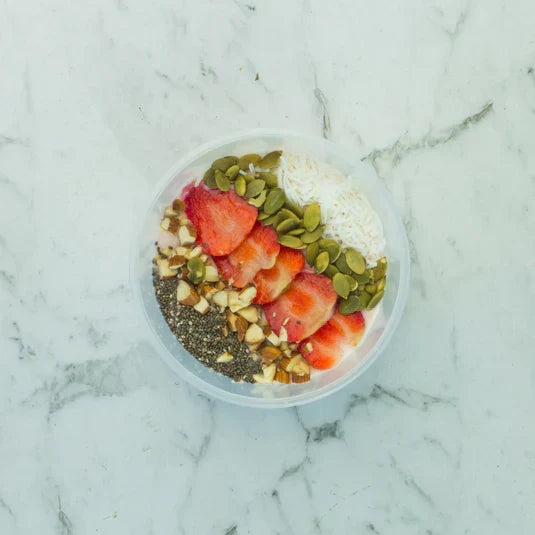When you first start your fitness journey, things like counting macronutrients (or macros) and tracking your food intake can seem overwhelming when in fact it’s actually quite simple. Once you’ve figured out what your daily consumption should be, it becomes easy to prep and log all your food which will lead to real results.
Here are some tips that will allow you to better understand macronutrients and how to utilise them to correctly structure your diet.
Understand what macronutrients are
Macros make up a large portion of our diet and consist of:
- Protein
- Fats
- Carbohydrates
Protein primarily assists your body with growth and repair, the manufacturing of hormones, as well as keeping your immune system healthy. The recommended amount of protein intake is around 0.8-1g per kilogram of bodyweight, depending on your level of physical activity. This value may increase depending on your energy consumption needs, particularly if you’re training regularly in the gym.
Fats are essential to maintain a healthy diet as they aid in protecting the body’s organs, improving brain development and correct cell functioning. It is recommended that you eat 25-30% of your daily calories in fats. Healthy fats can be found in foods such as avocado and nuts.
Carbohydrates are the sugars, starches and fibres found in certain foods that generate essential fuel for the body. When tracking your macros, carbs should total approximately 45-65% of your total calorie intake.
Figure out your daily intake
Before you do anything, it’s essential to figure out your TDEE or Total Daily Energy Expenditure. The easiest way to do this is to enter your information into an online TDEE calculator which will tell you the number of calories, protein, fats and carbs you should be consuming. Once you’ve figured out this information you will be able to tailor your diet to your correct macronutrient needs.
Prep your meals in advance
Trying to figure out your macros on a day to day basis may become overwhelming, which is why it’s much easier to prep your meals in advance. This will save you time and allow you to calculate exactly how much food you will be consuming over the week. This can be done with all of your meals including snacks and breakfasts. Healthy meal prep ideas can simply be sourced online which makes things even easier.
Log Everything
MyFitnessPal is a great app for you to use so you can log all information in regards to your daily food intake. You can save recipes and meals into its database which makes keeping track of your macronutrients much easier.
If you enjoyed this article, you may be interested in our meal prep delivery service. We take the stress out of macronutrient counting, leaving you time to do the more important things in life.




